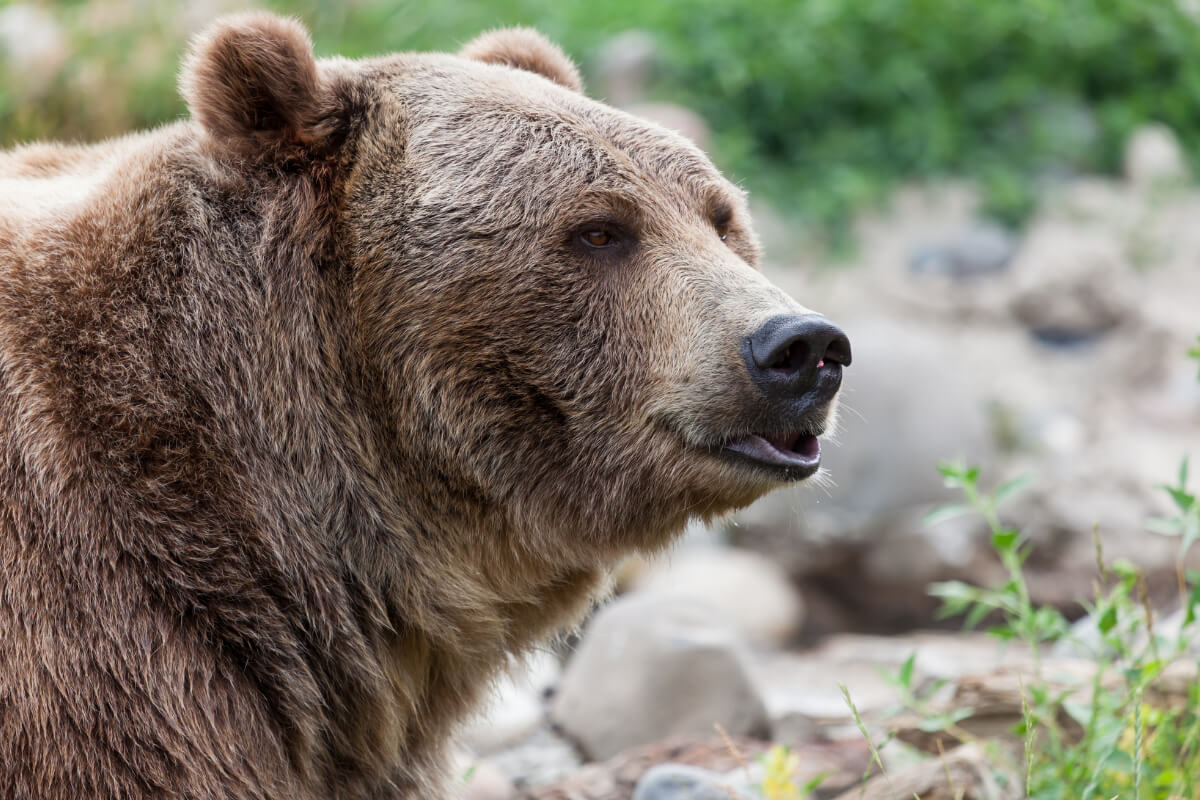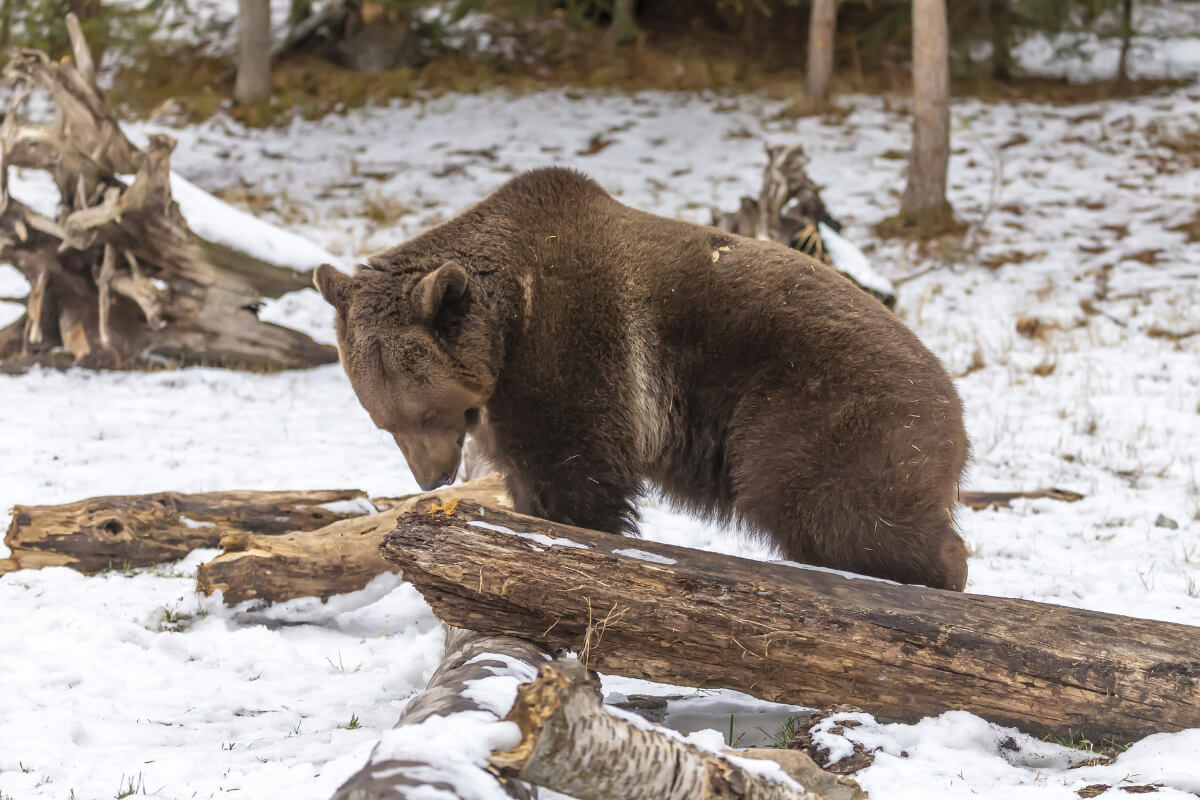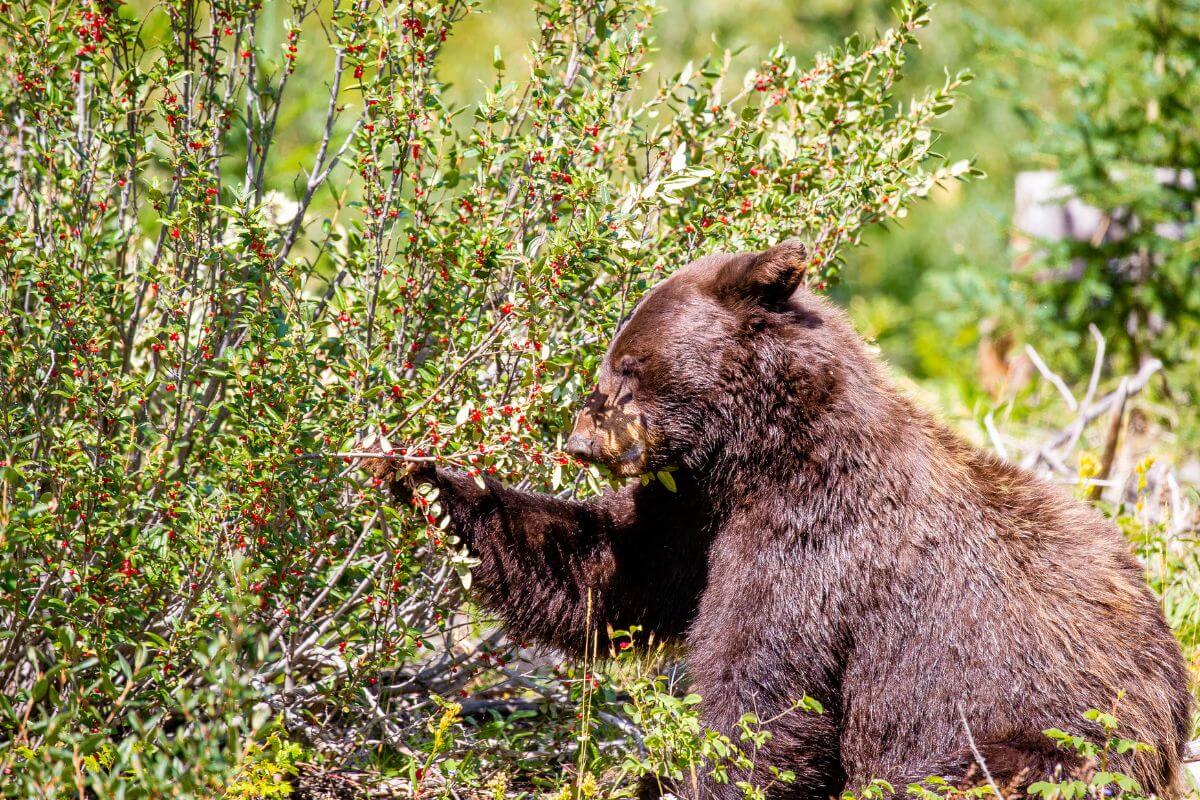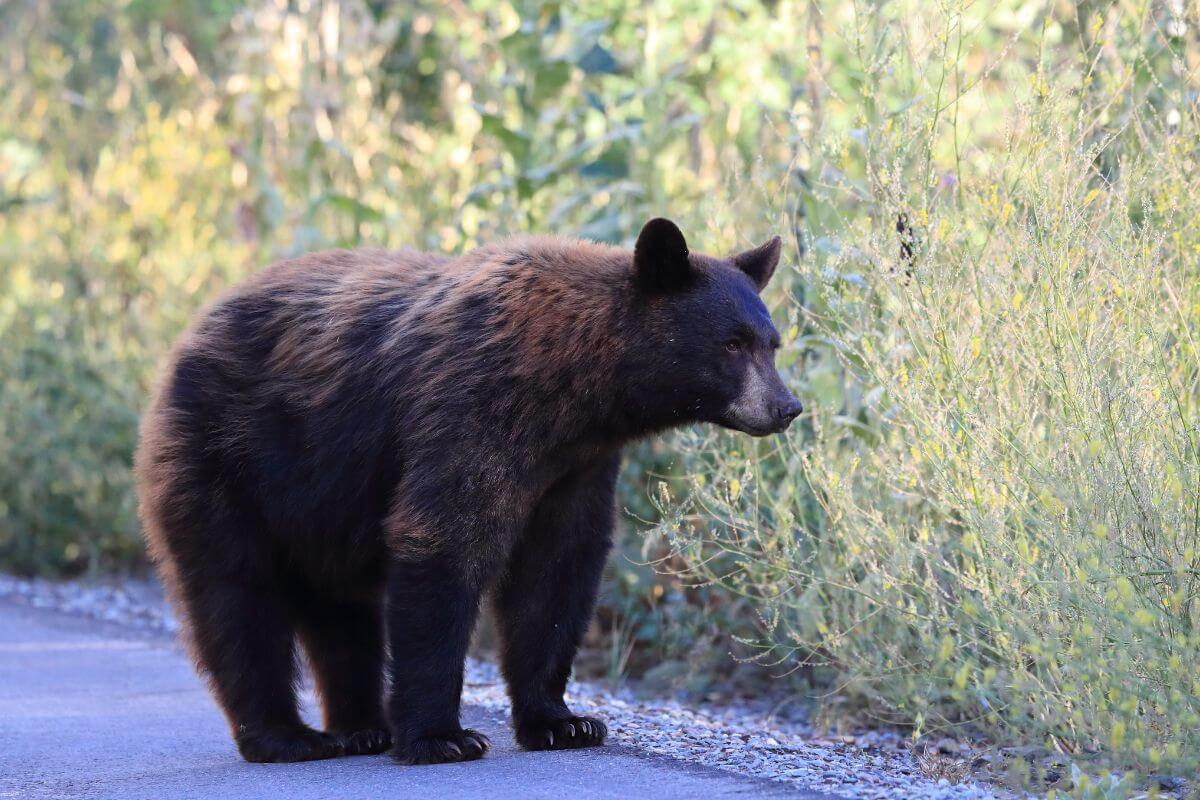Are you someone who loves wildlife and wants to experience the wonders of the natural world? Or maybe you’re an adventurer who wants to learn about the wildlife of Montana?
Look no further, as you have arrived at the perfect destination!
Allow me to introduce you to the grizzly, Montana’s official state animal! Together, we will delve into why this creature holds such a cherished and awe-inspiring status within the United States.
As we explore this topic, we’ll talk about the physical appearance, diet, behavior, and habitat of these majestic creatures.
This article is for anyone who is interested in learning about this incredible animal that calls Montana’s parks, forests, and historic sites its home.
- Related article: Symbols of Montana
So, come join me on this journey of discovery as we discover the wonders of Montana’s grizzlies population, their habitat, and the incredible efforts made to ensure their survival.
Montana’s State Animal: Grizzly Bear

This mammal is a native of Montana and have a big impact on the state’s history and culture for generations.
Back in 1983, Governor Schwinden made it official by signing a law that declared the grizzly as Montana’s state animal.
This was a way of acknowledging and honoring the significant role these bears play in the state.
Montana has the largest grizzly population, outside of Alaska. The state’s commitment to conservation is emphasized by this.
The grizzly population has faced various obstacles in the past, including the loss of their habitat and illegal hunting.
Due to the joint efforts of federal protection measures and local organizations, these bears have made an impressive comeback.
Today, people visiting Montana can witness these magnificent creatures in their native environment, particularly in well-known places like Yellowstone National Park and Glacier National Park.
Montana’s grizzlies symbolize the state’s natural beauty and unique character, and their protection is essential in preserving Montana’s identity for generations to come.
As you embark on your journey to discover more about the animals representing Big Sky Country, you might wonder: What’s Montana’s state bird?
It’s a fascinating creature to explore, so feel free to delve into its details without hesitation.
Grizzly Bear Physical Appearance

These creatures come in different fur colors, from black to blonde, and what makes them unique is their grizzled look with silver-tipped fur. It’s something you won’t find in other bears.
Standing at around 3-1/2 feet (1.0 m) at the shoulder, and weighing between 216 to 717 lbs if they’re male, and 200 to 428 lbs if they’re female, grizzlies are undeniably imposing creatures.
These mammals have unique bumps on their back. It’s a bunch of muscles that have grown from all the digging they do for roots and food.
When grizzlies feel threatened, they can run at speeds of up to 35 miles per hour. This is because they have hind legs that are bigger and stronger than their front legs.
Grizzly Bear Habitat and Threats

These incredible creatures can be found in a variety of environments, such as dense forests, prairies, high-elevation mountains, and frozen tundras.
Grizzlies are naturally found in North America, Europe, and Asia, but in the United States, you can spot them in the wilds of Montana and Alaska, as well as in Canada.
Unfortunately, the habitat of this mammal is facing serious threats. Climate change, loss of habitat, and other factors have made it increasingly difficult for these majestic animals to thrive in their natural habitats.
Conservation efforts are actively working to protect grizzlies’ populations. These efforts involve restoring their habitats and educating people about the importance of conservation.
By coming together and taking action through initiatives that focus on habitat preservation and conservation education, we can ensure that future generations will have the opportunity to admire these magnificent creatures as well.
Grizzly Bear Diet

These huge creatures are famous for being big and incredibly strong, but many people may not know that they are also versatile eaters.
Grizzlies enjoy devouring a variety of foods including fish, berries, grasses, leaves, insects, roots, carrion, nuts, fungi, and even small mammals.
They particularly relish ungulates like deer and elk, which provide a rich source of protein.
However, they are also content with snacking on plants and will happily munch on grasses and leaves when other food options are limited.
It may be surprising, but it’s actually common for omnivorous predators of this size to include plants in their diet.
For these magnificent creatures, a varied diet is what allows them to thrive in the wild.
- Related: Montana Plants
Grizzly Bear Behavior

These “silver-tipped” bears are fascinating animals that have unique behaviors and characteristics.
Instead of having territories, they typically establish home ranges where multiple bears can coexist in the same habitat. The size of these home ranges can vary depending on the gender.
For adult grizzlies, females may have ranges spanning from 50 to 150 square miles, while males can possess significantly broader territories, spanning up to 600 square miles.
These animals enter a period of hibernation during the winter months in the lower 48 US states, which usually lasts from October or November to April.
Grizzlies spend about four to six months in dens without eating, drinking, urinating, or defecating. This period is called hyperphagia, and it’s when bears store fat by consuming large amounts of food.
They can gain almost 3.64 pounds of weight per day. During hibernation, they can lose around 30% of their body weight. They rely on the fat they’ve stored up to sustain themselves for about 2 to 4 months.
Although grizzlies generally try to stay away from humans, they can get defensive when they feel threatened. They’re fiercely protective of themselves, their young, and their food.
Here’s something important to keep in mind: if grizzlies get used to getting food from human sources like garbage, pet food, or birdseed, they might stop being cautious around people.
In fact, they could even become aggressive. So it’s crucial for us to avoid feeding them and maintain a safe distance.
These mammals exhibit a remarkable social system that influences how resident bears move and interact with each other.
Their complex behaviors and presence make them a significant attraction in Montana, contributing to the state’s unique identity.
Montana State Animal Final Thoughts

This imposing creature holds a special place in Montana’s heart, representing the state’s beauty and cultural heritage.
Despite facing challenges like losing their habitats and falling victim to poaching, grizzlies have shown resilience and made a recovery, thanks to dedicated conservation efforts.
Montana shows its admiration for these mammals by selecting them as the state animal, preserving their habitats, and educating people about their conservation.
However, the grizzlies’ habitat is still in danger, and it’s crucial that we continue our efforts to ensure their survival.
Montana can ensure its unique identity and diverse species’ endurance for future generations by protecting grizzlies’ homes and resolving human-wildlife conflicts.
Exploring Montana and having the chance to witness the presence of the magnificent animal is not only an opportunity to connect with nature but also a chance to truly appreciate these extraordinary creatures.
Montana State Animal FAQs
1. What Is Montana’s State Animal?
Montana’s official animal is the grizzly bear. Even though they might appear scary, these creatures usually don’t act aggressively unless someone bothers them or makes them feel endangered.
2. What Is the Largest Animal in Montana?
The largest animal you’ll find in Montana is the Bison.
The male bison, known as a bull, can weigh as much as 2,000 pounds and stand about 6 feet tall.
On the other hand, the female bison, referred to as cows, can weigh up to 1,000 pounds and reach a height of 4 to 5 feet. Bison calves weigh 30-70 pounds at birth.
3. What to Do When You Encounter a Bear?
If you cross a bear and don’t have bear spray with you, here are some tips to increase your chances of surviving an attack:
- Do not look a bear in the eye (it’s an intimidation factor).
- Lay flat on the ground on your stomach.
- Spread your legs out as wide as you can. This helps prevent the bear from flipping you over.
- Put your hands over the back of your neck to protect that vital area.
- Wait for the bear to leave.
- Get out of the area and call for help.
4. Are Grizzly and Brown Bears the Same?
Brown bears and grizzly bears are different names for the same species, Ursus arctos. The distinction arises from their habitat, which influences their diet, size, and behavior.
Coastal bears in Alaska, known as brown bears, have abundant access to marine food, resulting in their larger size, whereas inland bears, referred to as grizzlies, have limited opportunities for feasting on marine resources, leading to their smaller stature.
5. Is It Legal to Hunt Grizzlies in Montana?
Grizzlies are protected by both state and federal law, including Montana hunting regulations.
In fact, there is no hunting season for them in Montana, and they remain listed as a threatened species by the U.S. Wildlife Service.
Intentionally or accidentally “taking” this mammal is illegal and can result in significant penalties.
6. Why Are They Called ‘Grizzly’ Bears?
According to Canadian explorer and author Edward Umfreville, “Bears are three kinds: the black, the red, and the grizzle bear,” he wrote.
The term “grizzle” is derived from the mixture of dark and white hairs on the bears’ brownish fur, which is characterized by silvery-gray tips.
This unique feature is the reason behind the name ‘grizzly’ bear.
If you want to learn more about Montana, keep your mind engaged with these articles:
- https://fwp.mt.gov/binaries/content/assets/fwp/montana-outdoors/2008/stateofthegrizzly.pdf
- https://fieldguide.mt.gov/speciesDetail.aspx?elcode=AMAJB01020
- https://digitalatlas.cose.isu.edu/bio/mammal/Carn/carndex.htm
- http://www.nps.gov/yell/naturescience/upload/bearcharacteristics.pdf
- http://bioweb.uwlax.edu/bio203/f2013/hackfort_dawn/habitat.htm
- https://www.cfc.umt.edu/grizzlybearrecovery/grizzly-bears/biology.php
- https://bookstore.umwestern.edu/mammals-montana-p
- https://www.byui.edu/radio/grizzly-bears
- https://www.nps.gov/katm/learn/photosmultimedia/brown-bear-frequently-asked-questions.htm
- https://www.montana.edu/extension/sanders/Bear%20Id%20Training.pdf
- https://news.cahnrs.wsu.edu/article/why-are-they-called-grizzly-bears/
- https://www.doi.gov/blog/15-facts-about-our-national-mammal-american-bison
- https://leg.mt.gov/bills/mca/title_0010/chapter_0010/part_0050/section_0080/0010-0010-0050-0080.html
- https://www.nps.gov/articles/bear-identification.htm

